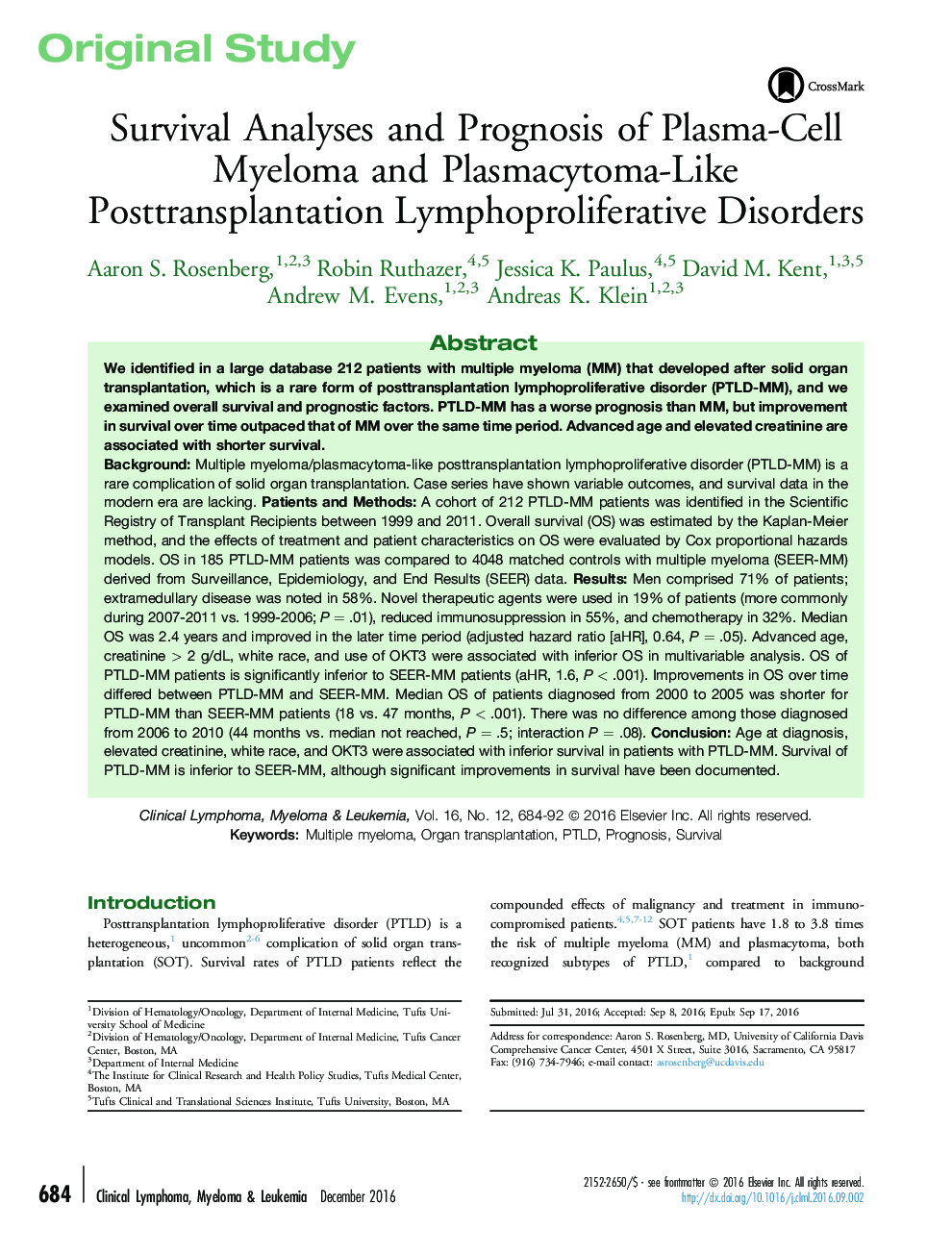| Article ID | Journal | Published Year | Pages | File Type |
|---|---|---|---|---|
| 5581680 | Clinical Lymphoma Myeloma and Leukemia | 2016 | 12 Pages |
BackgroundMultiple myeloma/plasmacytoma-like posttransplantation lymphoproliferative disorder (PTLD-MM) is a rare complication of solid organ transplantation. Case series have shown variable outcomes, and survival data in the modern era are lacking.Patients and MethodsA cohort of 212 PTLD-MM patients was identified in the Scientific Registry of Transplant Recipients between 1999 and 2011. Overall survival (OS) was estimated by the Kaplan-Meier method, and the effects of treatment and patient characteristics on OS were evaluated by Cox proportional hazards models. OS in 185 PTLD-MM patients was compared to 4048 matched controls with multiple myeloma (SEER-MM) derived from Surveillance, Epidemiology, and End Results (SEER) data.ResultsMen comprised 71% of patients; extramedullary disease was noted in 58%. Novel therapeutic agents were used in 19% of patients (more commonly during 2007-2011 vs. 1999-2006; PÂ = .01), reduced immunosuppression in 55%, and chemotherapy in 32%. Median OS was 2.4 years and improved in the later time period (adjusted hazard ratio [aHR], 0.64, PÂ = .05). Advanced age, creatinine > 2 g/dL, white race, and use of OKT3 were associated with inferior OS in multivariable analysis. OS of PTLD-MM patients is significantly inferior to SEER-MM patients (aHR, 1.6, PÂ < .001). Improvements in OS over time differed between PTLD-MM and SEER-MM. Median OS of patients diagnosed from 2000 to 2005 was shorter for PTLD-MM than SEER-MM patients (18 vs. 47 months, PÂ < .001). There was no difference among those diagnosed from 2006 to 2010 (44 months vs. median not reached, PÂ = .5; interaction PÂ = .08).ConclusionAge at diagnosis, elevated creatinine, white race, and OKT3 were associated with inferior survival in patients with PTLD-MM. Survival of PTLD-MM is inferior to SEER-MM, although significant improvements in survival have been documented.
